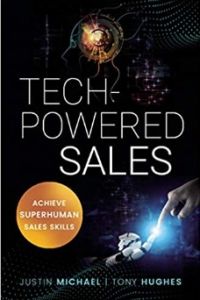Join getAbstract to access the summary!

Join getAbstract to access the summary!
Justin Michael and Tony Hughes
Tech-Powered Sales
Achieve Superhuman Sales Skills
HarperCollins Leadership, 2021
What's inside?
Upcoming AI, bots and other technology portend a complete revision of B2B sales.
Recommendation
As Arthur C. Clarke once wrote, “Any sufficiently advanced technology is indistinguishable from magic.” Accordingly, Justin Michael and Tony Hughes predict that versatile sales bots are likely to run B2B sales in the future. For example, a rep’s artificial intelligence (AI) sales bot could “ping-pong” with a buyer’s bot to start a sales process that the two people then pursue. To maintain relevance and viability, reps must master AI, sales technology and the increasingly influential B2B sales bots.
Summary
About the Authors
Justin Michael, who set records for full-cycle revenue creation in cutting-edge SaaS, inspired the COMBO Prospecting sales pipeline. Tony Hughes is the co-founder and sales innovation director at Sales IQ Global.






















Comment on this summary